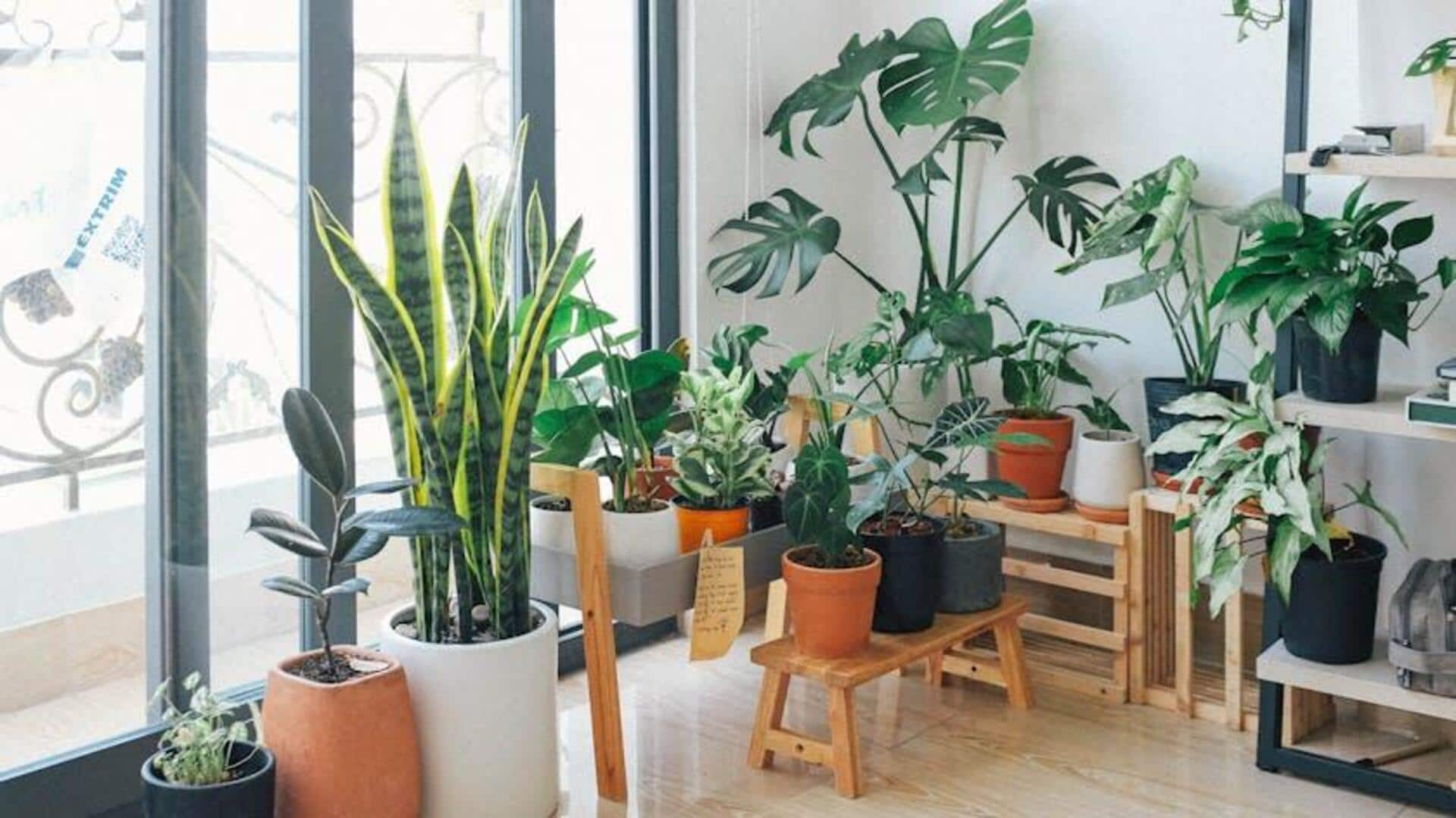
5 ways to refresh your plants every morning
What's the story
Creating a morning routine for indoor plants can do wonders for their growth and health. With a little focus on consistency, you can make sure that your plants grow well indoors. This is all about knowing their requirements and providing the right conditions for the plants to grow. Here are some practical insights to help you establish an effective morning routine for your indoor plants.
Timing matters
Watering at the right time
Ideally, watering your plants in the morning is best as it allows them to soak up moisture throughout the day. This also prevents overwatering, which can cause root rot. Check for dryness before watering to ensure the soil is moist and not waterlogged. Tailor the frequency to each plant's needs, as some may need daily watering and others only every few days.
Light needs
Ensuring adequate light exposure
Indoor plants require adequate light to photosynthesize properly. Open curtains/blinds in the morning to allow natural sunlight into your space. If you have limited natural light, you may use artificial grow lights for a couple of hours every day. Place your plants near windows where they get indirect sunlight without being subjected to the harsh rays of midday sun.
Climate control
Monitoring temperature and humidity
Keeping the temperature and humidity levels right is essential for healthy plants. Most houseplants do well in temperatures ranging from 18 degrees Celsius to 24 degrees Celsius (64 degrees Fahrenheit to 75 degrees Fahrenheit). Check the room temperature regularly with a thermometer. Also, maintain the humidity levels between 40% to 60%. You can mist leaves or place a tray of water around your plants to increase humidity.
Health checkup
Checking for pests and diseases
As part of your morning routine, make it a habit to regularly check your indoor plants for signs of pests or diseases. Check for discolored leaves, spots, or unusual growth patterns that may indicate an issue like aphids or fungal infections. Early detection can help you address these issues promptly with appropriate treatments like insecticidal soap or neem oil solutions.
Maintenance task
Pruning dead leaves regularly
Pruning dead leaves from your indoor plants promotes healthy growth by redirecting energy toward new shoots, foliage production instead of maintaining unhealthy parts of the plant structure itself. Use clean scissors while removing dead leaves, ensuring cuts are made close enough so no stubs remain behind. Regular pruning also improves air circulation around each individual leaf surface area, reducing risk factors associated with mold formation due to stagnant airflow conditions indoors.